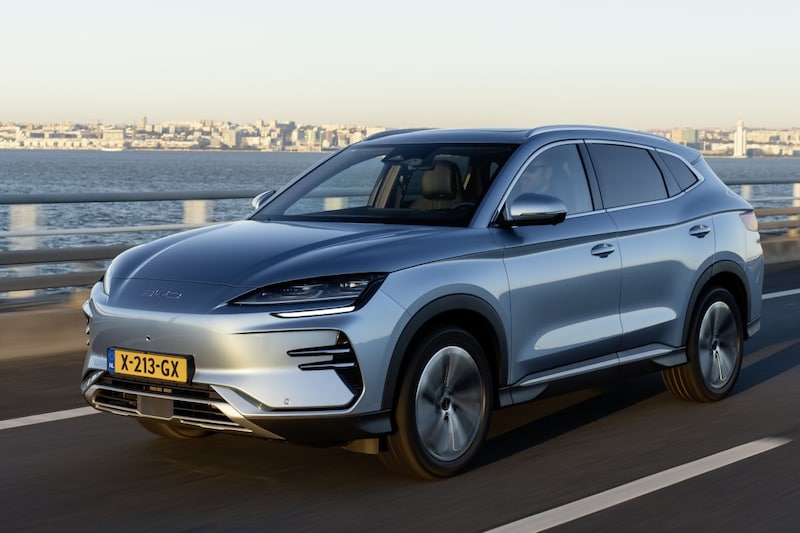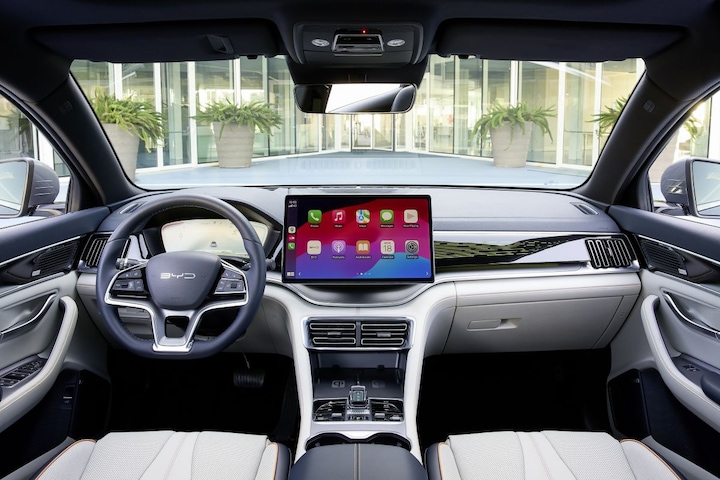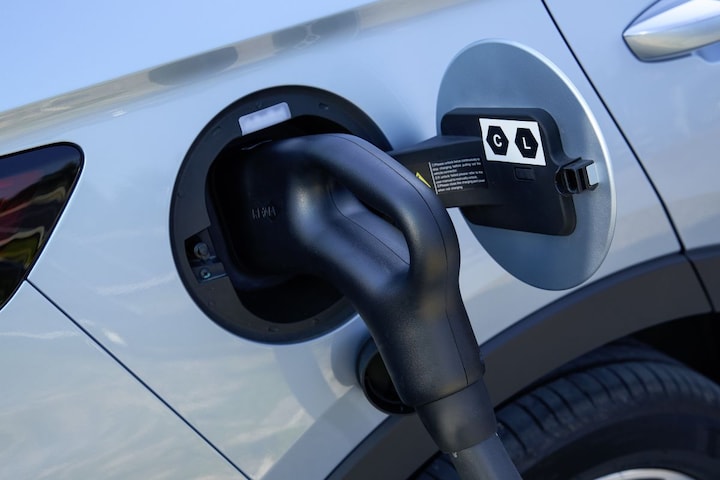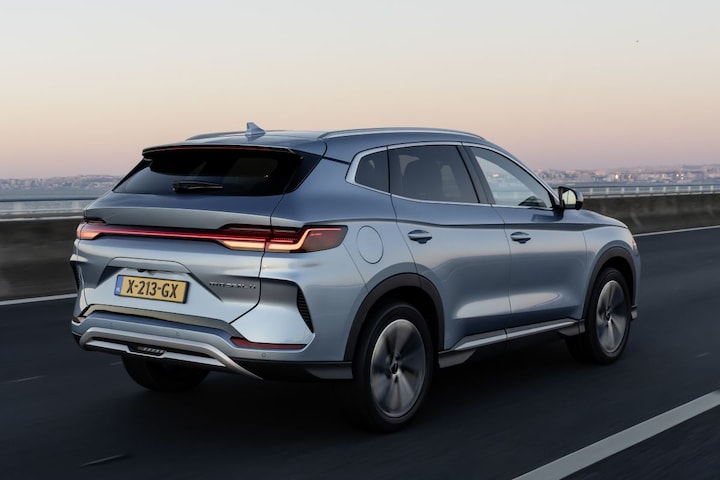The electric BYD Seal U is the largest SUV that the Chinese brand currently has in its range. The Chinese themselves consider it premium, but do we think so too?


With the Seal U, BYD now also has an electric D-segment SUV in its range. In their communications we come across the term ‘premium’. Does this tall Chinese really live up to that classification?
Is the BYD Seal U the tall brother of the Seal sedan?
The U in the Seal U’s model name stands for utility, indicating that it is an SUV. Although the name suggests otherwise, the regular Seal (a D-segment sedan) and the Seal U have little in common. We know the low Seal here as rear-wheel drive or, if desired, four-wheel drive. The SUV is known in China as the BYD Song Plus, which is a front-wheel drive – optionally with a fully electric or a plug-in hybrid drivetrain. With the latter technology, the Seal U is not coming our way, BYD only sells BEVs to us. While the battery pack of the low Seal is an integrated part of the supporting structure of the car, the battery of the Seal U is a separately mounted unit against the underside of the car. No problem, plenty of room with the higher-legged Seal U. The Song Plus is the more luxurious variant of the regular Song in the People’s Republic and is also sold there through a more upmarket dealer network. BYD even uses the term premium in their communications. Bold. To quote Margaret Thatcher: “Being powerful is like being a lady. If you have to tell people you are, you aren’t”.

The interior looks neat and tidy, neat middle class.
As big Europeans, do you have enough space?
The wheelbase of the Seal U is 14 centimeters shorter than that of the sedan. Nevertheless, you don’t notice much of this inside the SUV. Even with an above-average length, you have more than enough space in the front in all directions. And rear passengers will not be short of legroom and headroom (under the panoramic sliding roof) in this five-seater. However, the seat of the back seat is on the short side and you also sit quite low, causing your knees to form a sharp angle while your legs barely receive any support from the seat. The trunk offers enough space with a capacity of 552 liters. And although there is plenty of room under the hood, BYD has not taken the opportunity to create a frunk there, for example to store a dirty charging cable.
The interior looks neat. But to immediately label that as premium… that goes too far for us. It’s neat middle class, nothing more. And that also applies to the service. Buttons and switches can only be found around the crystal gear lever and on the steering wheel. For the rest you have to rely on the central multimedia screen. The latter can be tilted, just like with the other BYDs. This can again be done at the touch of a button, but you can now also turn it manually (without breaking anything). For our taste, there is just too much functionality in the infotainment system and that is too distracting. It is also a pity that the navigation information is only shown on the large screen and not on the head-up display or the digital instruments (where you now permanently see the tire pressure and temperature).

The BYD Seal U offers enough space in both the front and the back, although the rear seat cushion is on the short side.
How far can you go on a full battery?
The Seal U comes in two versions, the Comfort and the Design. The main difference between the two variants is not the comfort or the design, but the size of the battery pack. The Comfort has a capacity of 71.8 kWh, which should allow you to travel 420 kilometers according to WLTP. The Design’s battery has a capacity of 87.0 kWh, giving you a WLTP range of 500 km. Both versions can be charged at 11 kW at the AC charging station, the small battery can handle a maximum of 115 kW at the DC fast charger, while the peak for the large battery is 140 kW. In both cases, the Seal U no longer pushes boundaries as a newcomer. And this also applies to the WLTP consumption: an average of 19.9 kWh/100 km for the Comfort and 20.5 kWh/100 km for the Design. Regardless of the battery pack, the Seal U has a synchronous motor with permanent magnets that peaks at 218 hp and 330 Nm. This means that the Design version, weighing 2,147 kg, can keep up with traffic smoothly. The car barely brakes with the engine, even when you increase the degree of recuperation via the multimedia screen (and not via a simple flipper behind the steering wheel). Shame. On the other hand: the braking system performs its task well, it can be dosed nicely and the transition from regenerative to mechanical braking is seamless.

According to WLTP, you should be able to travel up to 500 kilometers on a full battery.
How does the big BYD drive?
We are less enthusiastic about the controls. As long as it goes straight, the car follows its course steady, but when we go around the bend, the steering appears to be quite strong and, above all, very distant. If you enter a bend a little too quickly, the car will slide out over its front wheels remarkably quickly. It doesn’t seem to be the tires, they are Michelin e-Primacy’s, rubber with which we generally have good experiences. We attribute it more to the tuning of the chassis; springs and shock absorbers are so flexible that there is quite a bit of movement in the car. We weren’t expecting a sports car, but this is the other extreme. So much flexibility is not necessary for comfort.

The suspension is quite supple, more than is necessary for everyday comfort.
Is BYD right to talk about premium?
The electronics often seem not to be able to keep up completely to prevent wheelspin when driving away. Perhaps recalibration can still take place before the customer cars come our way for the summer. This refinement can also include the lane assistant, which now seems more often not to be on task, just like the speed warning, which appears not always to be aware of the current limit. All in all, these are not insurmountable flaws, and if BYD manages to eliminate them, the ‘premium’ classification is still a bit too high, but it is an excellent family car that is remarkably cheaper than the low Seal.









